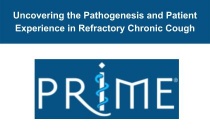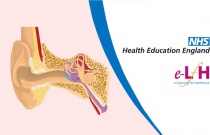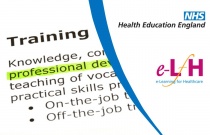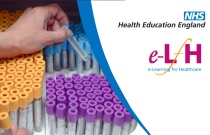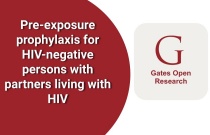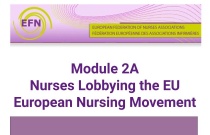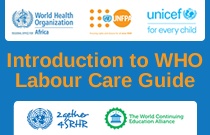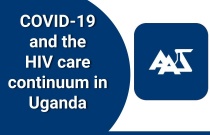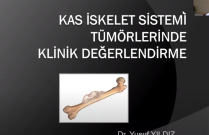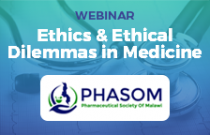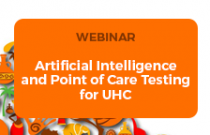Uncovering the Pathogenesis and Patient Experience in Refractory Chronic Cough
Michael S Blaiss, Ryan J. Atkinson, Peter Dicpinigaitis, Brad Boyette, Joyce M Knestrick, Ricardo Correa
1.00 Hours
Refractory chronic cough (RCC), which often persists for years and has significant repercussions for patient's physical, emotional, and social wellbeing, can be a difficult condition to diagnosis. Furthermore, a lack of FDA-approved treatment options specific to chronic cough has challenged healthcare professionals managing pati....
Effective Team Working
Andrew Brittlebank & Emma Stanton
0.50 Hours
This session examines how working within and across multidisciplinary teams to deliver and improve services can bring benefits to patients. This session contributes to the development of leadership in clinical settings.
Physiology of the Inner Ear
Angela Mack
This session describes the part that the physiology of the inner ear plays in the hearing process. It looks at how movement of the inner ear fluids results in stimulation of the acoustic nerve, as well as the functions of the inner and outer hair cells and how they contribute to such a sensitive process. This session should prov....
Demonstrating Personal Quantities: Continuing Personal Development
Rhonda Fusco, Christine Sykes, and Caragh Urguhart
0.50 Hours
Embracing lifelong learning as a dynamic process that can positively influence practice and healthcare is an essential aspect of on-going development for all professions involved in healthcare.
Safe Prescribing and VTE Scenario
National Health England
0.25 Hours
In this scenario you are going to meet a patient called Jeremy. You will follow his journey from his GP, to hospital and then to discharge. You will explore his story and be presented with questions along the way.
Pre-exposure prophylaxis for HIV-negative persons with partners living with HIV
Gates Research Foundation
Pre-exposure prophylaxis for HIV-negative persons with partners living with HIV: uptake, use, and effectiveness in an open-label demonstration project in East Africa
EXAMPLE NO PRE-TEST
Mr WCEA Administrator
lease add a course description with a minimum of 20 characters.
Module 1B - EU Functioning EU Institutions to deal with!
Dr Paul De Raeve, EFN Secretary General
Combining sovereignty means that each member state delegates part of its power to common institutions that make decisions on specific issues of common interest at European level. This course will describe EU Institutions and how to work with them.
Module 2A - Nurses Lobbying the EU European Nursing Movement
Dr Paul De Raeve, EFN Secretary General
Nurses Lobbying the EU European Nursing Movement
Los efectos de las emergencias en la salud y la nutrición - una introducción
Humanitarian Leadership Academy, Save the Children
Kaya Si queremos reducir las enfermedades y las muertes prevenibles, es esencial entender los factores de riesgo relacionados con la salud y la nutrición que surgen durante las emergencias. Con este curso, aprenderá a identificar los riesgos para la salud y la nutrición que aumentan durante los diferentes tipos de emergencias.
Webinar: Introduction to the WHO Labour Care Guide Part 3 - Operationalization of the LCG in Maternity Units
Dr. NKURUNZIZA
Part 3 of the WHO Labour Care Guide introduction SESSION CHAIR: Triphonie NKURUNZIZA PANELISTS Mercedes BONET SEMENAS Rose Laisser Veronica Pingray Nancy Kidula Fatima Gohar Muna Abdullah Remarks: Frances Emma MCCONVILLE Hilma Shikwambi The WHO Labour Care Guide is the new tool developed to facilitat....
Healthcare providers’ perspective on barriers to optimal HIV index testing: an interview-based study
Cibangu Katamba
Global HIV testing services (HTS) and antiretroviral therapy have seen a substantial scale up. A study conducted in Zambia revealed that index testing coupled with targeted community-led HTS are useful strategies to diagnose men living with HIV. Effective approaches to HIV testing are needed to reach undiagnosed people and link....
Design and protocol for a pragmatic randomised study to optimise screening, prevention and care for tuberculosis and HIV in Malawi (PROSPECT Study)
Peter MacPherson,Emily L. Webb,David G. Lalloo,Marriott Nliwasa,Hendramoorthy Maheswaran,Elizabeth Joekes,Dama Phiri,Bertie Squire,Madhukar Pai,Elizabeth L Corbett
Tuberculosis (TB) is now the leading infectious cause of death worldwide. New impetus has been given to efforts to improve tuberculosis control by the recent-agreed global End-TB Strategy. Modelling studies have shown however that the End-TB targets will not be met without a step-change in efforts to improve the early diagnosis....
Webinar for African Academy of Sciences
Mr David Montgomery
This webinar is intended for demonstration purposes.
Infection Prevention & Control (Non-Clinical)
Industry Specialists
2.00 Hours
Infection poses a threat to everyone and can lead to severe illness, a worsening of underlying conditions or even fatalities. It is therefore important to understand the routes by which an infection can get into the body and the ways in which your own health or hygiene might pose a risk to yourself and others. This course pro....
Kas İskelet Si̇stem İ Tümörleri̇nde Kli̇ni̇k Değerlendi̇rme
Dr. Yusuf YILDIZ
Tümörle bağlantili olabilecek şikayetleri öğrenir Tümör kuşkusu olan hastada fizik muayene yöntemlerini öğrenir Tümörlü hastada röntgnenin önemini kavrar Fizik muayene ve röntgen sonrasinda ayirici tani için gerekecek ileri terkikleri öğrenir Tümörlü hastanin psikolojisini öğrenir Tümörlü hastanin tedavi yöntemlerini öğren....
Younger ages at risk of COVID-19
Mr WCEA Administrator
Course Description* Please add a course description with a minimum of 20 characters.
Ethics and Ethical Dilemmas in Medicine
Dr Daniel Kaonga
This lecture is aimed at unfolding ethics and ethical dilemmas in medicine.
Artificial Intelligence and Point of Care Testing for UHC: Prospects for Improving Diagnostic Accuracy and Quality of Primary Care.
Mr Opeyemi Akindele
Artificial Intelligence and diagnostic technology
